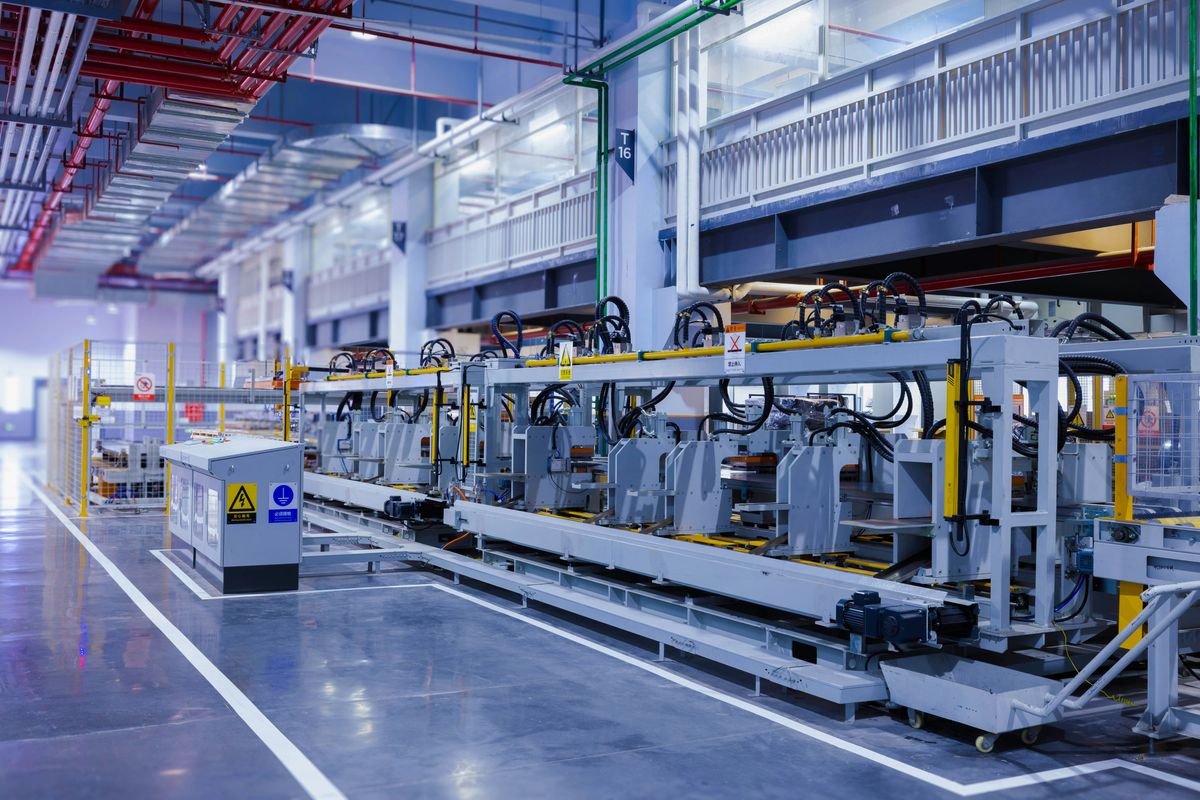Pakistan’s large industry output increased 2.7 % in Sept
LSMI index jump is propelled by higher manufacturing in automobile, machinery, and transport sectors
Business Desk
The Business Desk tracks economic trends, market movements, and business developments, offering analysis of both local and global financial news.

For the first quarter of fiscal year 2026, the LSMI increased 4.1% from the same period a year earlier
Pakistan’s industrial sector showed signs of recovery in September as manufacturing rose 2.7% from the same month last year, supported by strong gains in automobiles, machinery and other key industries, according to newly released official data.
The Large-Scale Manufacturing Index (LSMI), which tracks the output of major industries, rose 2.1% in September compared to the previous month.
On a year-over-year basis, the strongest contributors to the September reading were automobiles, up 75%; machinery and equipment, up 51%; other manufacturing, up 39%; and other transport equipment, up 26%.
The largest declines came from furniture, which fell 38% from the previous year, followed by tobacco, down 12%, and pharmaceuticals, down 11%.
For the first quarter of fiscal year 2026, the LSMI increased 4.1% from the same period a year earlier.
Economic analysts expect manufacturing to continue improving as inflation eases and interest rates decline, helping lift aggregate demand. However, they caution that broad-based demand remains soft due to higher taxation and the fallout from recent floods, which damaged infrastructure and production facilities.
Some relief may come from post-flood reconstruction, supported by mortgage tax credits and a PKR 10 billion low-cost housing subsidy for FY26, likely boosting activity in cement, steel, real estate, glass and ceramics, and chemicals.
Textile output strengthens on seasonal demand
Textile production increased about 5% in September from August, driven by higher output of terry towels and bathrobes, up 5%, and woolen blankets, which more than doubled as winter-season demand lifted orders for home textiles.
On a year-over-year basis, textile production grew 6%, supported by increased production of yarn (2%), jute goods (32%), woolen and worsted clothing (44%), and woolen blankets, which rose 1.4 times from last year.
Automobile production continues strong rebound
Automobile production climbed nearly 6% from August. Output of jeeps and cars rose 4%, while truck and bus production surged about 41% and 19%, respectively. Light commercial vehicle output, however, dropped 30% month-over-month.
Year-over-year, the auto sector recorded strong gains: production of jeeps and cars rose 72%, trucks increased by more than 2.2 times, and buses grew 38%.
Analysts attribute the rebound to lower manufacturing costs, stable tariffs, a revival in auto financing due to lower interest rates, reduced import restrictions on completely knocked-down (CKD) units and improving macroeconomic conditions. LCV production was the exception, falling 34% from September 2024.
The sector is expected to continue expanding through FY26 as consumer demand strengthens and financing conditions improve.
Food production slips, cement output rises
Food manufacturing declined 2% month-over-month in September. The largest declines came from cooking oil, down 7%, and vegetable ghee, down 5%, reflecting weaker demand and volatile input prices during the period.
Cement production increased 1% in September to nearly 3.5 million tons, up from about 3.4 million tons in August.
The rise reflects improving construction demand following federal incentives introduced in the FY26 budget. Rehabilitation in flood-affected northern regions has also begun to stimulate activity in the construction supply chain, with further gains expected as rebuilding accelerates in the coming months.
Petroleum product output jumped 16% in September, driven by higher production of high-speed diesel (16%), motor spirit (12%), diesel oil (about 54%), furnace oil (26%) and jet fuel (20%). Output also increased 7% year-over-year, supported by strong gains in diesel oil, up 67%, and moderate increases in high-speed diesel and jet fuel.
Analysts forecast a 7% rise in petroleum product sales in FY26, consistent with higher sales volumes recorded in the first quarter. Furnace oil, however, saw a sharp 72% year-over-year decline in October due to an ongoing policy shift away from its use in power generation.










Comments
See what people are discussing